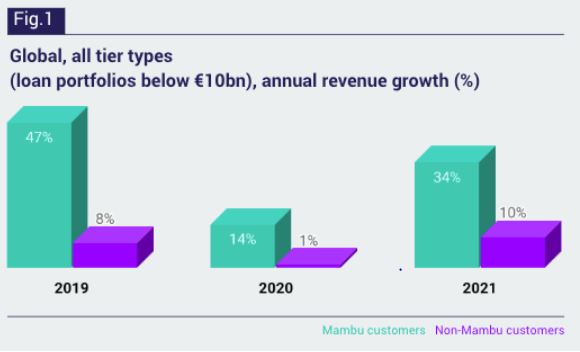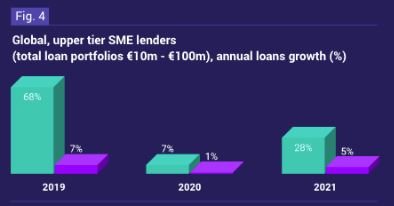As the financial landscape continues to face turbulent economic times, financial institutions (FIs) are seeking innovative solutions to bolster their growth in revenue and stay competitive. Among the range of technology solutions available to companies today, software-as-a-service (SaaS) solutions are some of the most impactful tools in helping businesses succeed.
According to Gartner, the SaaS industry is projected to experience its largest annual growth between 2022 and 2023, reaching a value of $195.2 billion by the end of this year.

Mambu’s Ben Thomas
Migration to SaaS shows no signs of slowing down, mainly due to its ability to bring solutions to market faster, drive down costs, support ecosystem expansion and enable company capacity to focus on critical innovation over and above core run-the-business maintenance activity.
Mambu’s new report ‘Turning turbulence into triumph’ takes a deeper look into the way personal lenders, SME lenders and neobanks have navigated disruption with the use of true SaaS platforms.
Behind the variance in performance, how can FIs seek to prepare for and manage ongoing disruption in years to come?
The impact of SaaS platforms on revenue growth
Mambu’s report emphasises the transformative power of genuine SaaS platforms, which act as catalysts for revenue expansion. The research shows that in 2021, SaaS-powered FIs achieved an impressive 34% growth, a recovery rate nearly 2.5 times quicker than the 10% growth observed among non-SaaS FIs.

Take upper-tier lenders powered by SaaS, for example. Although they saw a drop in their loan growth from 52% to 44% from 2019 to 2020, this was a more favourable outcome, in comparison to their traditional counterparts, which saw their loan growth plummet even further from -12% to -22% during the same period.
This contrast demonstrates the ability of true SaaS platforms to cushion the impact of disruptions and maintain a steady growth trajectory.

By leveraging SaaS technology, FIs are able to adapt existing products, launch new ones and integrate new technology solutions at a much higher pace. This enables them to effectively navigate and prosper in demanding and unpredictable circumstances.
Recovery and future growth
As we know, the pandemic was a catalyst for change for businesses across all sectors. The need to implement work-from-home and hybrid working policies overnight, while managing the myriad other challenges created by the pandemic, drove a step change in digitisation.
We see this same dynamic in FIs, particularly in how they communicate with their customers and the pace at which they adapt existing products and services, and launch new ones. This is further evidenced in the report when looking at upper tier SME lenders.
The whole market experienced a slowdown in 2020, but SaaS-powered lenders were able to maintain moderate growth even through 2020 and recovered quicker in 2021. This is due to the pace at which they can adopt changes that their customers need.

The future of FIs
To fully embrace the potential of true SaaS platforms, FIs must pivot and adopt this groundbreaking technology at pace.
By leveraging these platforms, banks and other FIs can streamline their operations, optimise processes, and improve customer experiences, which will enable them to stay ahead of the market and lead to enhanced revenue growth.
FIs that miss this opportunity are likely to find themselves falling behind, saddled with an ever-increasing level of technical debt and slow pace of change.
Positioning for future growth
The ever-growing uncertainty, given the current macroeconomic climate, reinforces the urgency of this. FIs need to find ways to secure revenue growth and build resilience.
SaaS-powered FIs have emerged as leaders in navigating disruption and embracing innovation. FIs that effectively capitalise on the benefits of SaaS, can position themselves for future growth and navigate uncertainty with confidence.
Ben Thomas is head of customer value at Mambu










